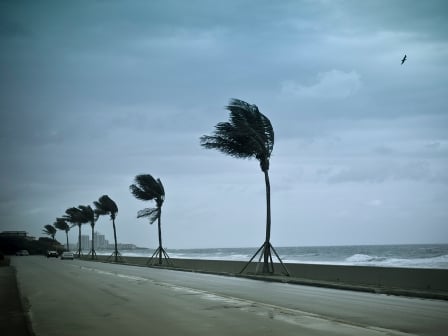By Dan Negron, Senior Underwriter, TT Club
While the effects of the three recent hurricanes in the Atlantic – Harvey, Irma and Maria - on the worldwide insurance industry are still being determined, some estimates are now setting the cost for these events at more than $100 billion.
It is difficult to accurately predict the full extent of the costs to the insurance industry, as they continue to roll in over time. These costs include damage to homes, offices, factories, as well as infrastructure such as roads and bridges.
Whether down to climate change, these disasters have massive implications for the insurance industry, government, as well for the lives of millions of Americans.
Join us at our Future of Flood 2017 Summit in Florida on November 16. Click here to register.
In the eye of the storm that was Hurricane Harvey, the port of Houston, the eighth busiest container port in the US, was left relatively unscathed as traffic was diverted to other regional ports away from the path of the storm. Harvey sidelined ports west of Louisiana in Texas, and resulted in the port of New Orleans welcoming cruise ships affected by the hurricane. Fortunately, thanks to sophisticated weather prediction technologies, warnings about Hurricane Irma were sent out early.
Despite all precautions taken for Irma, the delay caused disruptions to the
ocean freight industry, as well as the logistics sector. Days after Irma passed, intermodal shippers continued to face delays for cargo that needed rail transportation through the South Eastern US and the likes of Amazon struggled to keep its two day delivery promise. The six major ports that closed as a result of Irma handle one of every six containers going in and out of North America, and as a result, this had a knock-on effect on supply chains.
Celebrate excellence in insurance. Join us for the Insurance Business Awards in Chicago.
While local businesses suffered increased shipping rates and logistical disruptions due to Hurricane Harvey, reports indicated transit-related losses were not too badly affected. According to modelling firm RMS, damage was most likely to affect shipments whose commodities, packaging, or storage was susceptible to wind, rain, and flood water contamination.
Hurricanes are becoming more frequent and are costing more; nine of the 10 costliest Atlantic hurricanes (not including Harvey or Irma) have occurred since 2000 and this increasing trend puts insurers and the government in danger for larger and increasingly regular recovery bills.
The insurance industry remains concerned about future potential costs and is currently a sector struggling with low margins, tough competition and falling prices. In the years since Hurricane Katrina hit the US Gulf Coast in 2005, insurance premiums had been steadily decreasing, as increased investment in the industry and the lack of significant disaster events put downward pressure on rates. This year’s events appear to have changed all that, as the losses continue to mount against the industry’s excess capital.
With several recent multibillion-dollar payouts in quick succession, reinsurers are facing greater pressure than ever. It was reported that as a result of claims resulting from Harvey and Irma, German reinsurance firm
Munich Re expected high insured losses, wiping out its third-quarter profit and threatening the company’s ability to meet its full-year earnings target.
Philip Kett, an analyst at Jefferies, suggests the cost of the catastrophes for the insurance industry could drive up prices, which have been falling for years and have the potential to end the persistent soft insurance market and lead to material pricing increases at the January 01, 2018 renewals.
Related stories:
2017 happened! Let’s do some catastrophe stress testing
‘We need an Apollo project’ for flood risk


